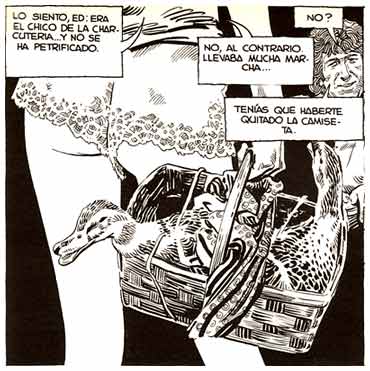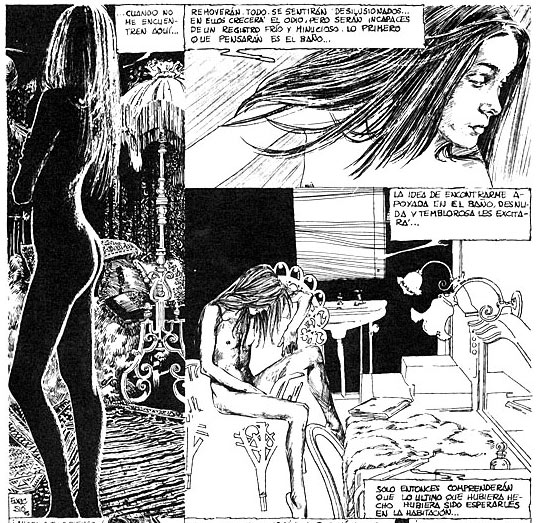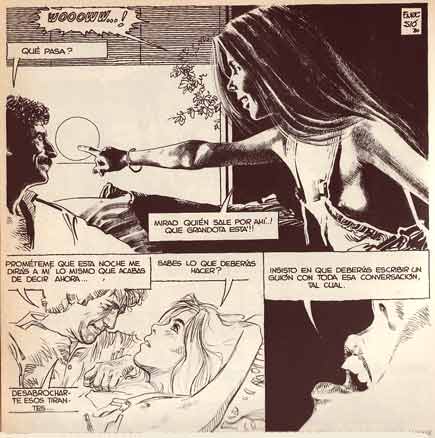Enric Sió i Guardiola was born in Badalona as the son of a textile company director. He studied economics, but his vocation eventually guided him to Fine Arts. He started his career in 1960, drawing for the publishers Mateu and Bruguera, as well as Josep Toutain's international agency Selecciones Ilustradas. For Selecciones, he made sentimental stories for the British Fleetway magazine Valentine. He subsequently worked as an editor and supervisor for Edicions 62/Ediciones Península.
By 1966, he was drawing 'Battler Briton' stories for Fleetway, but he also started making more personal works. Among his more personal works, including the stories 'Lavinia 2016' and 'La Guerra de los Poetas' with writer Emili Teixidor in the magazine Oriflama. With its subtle satire of cultural and political life in Catalonia, 'La Guerra' was one of the first comic stories critical of Franco.
In 1968, he made two experimental comic stories for a book collection of the publishing house Salvat. He also collaborated with Román Gubern on the book 'El lenguaje de los Comics', and created his comic story 'Aghardi' in 1969. Sió was subsequently present in the horror magazine Drácula with the series 'Mis Miedos' in the early 1970s.
In 1971, he won the prestigious Yellow Kid Award in Lucca for Best Foreign Artist. He went into voluntary exile in Italy in 1974, because of the political climate in Spain. Following an idea of his friend Andrés Martin, he created one of his best-known works, 'Mara'. It ran in several magazines between 1970 and 1975, most notably in the Italian review Linus, and was collected in book format in 1980. He showcased his talents for drawing erotic scenes through his participation in the book 'Il Casanova'. He also drew the story 'L'Uomo delle Piramidi' in the Italian collection 'Un Uomo Un'avventura'.
Mara
He settled in Paris, France, in 1977, where he participated in the collection 'L'Histoire de France en Bandes Dessinées' by Larousse. He contributed to many of the important and alternative European comic magazines of the time, such as Charlie Hebdo, Fluide Glacial and Pilote, and also to the Spanish magazines Totém and Rambla after his return to his home country in 1979.
From the 1980s, he focused more and more on commercial illustration, photography and film. In 1985, he did launch and edit the short-lived adult comic magazine La Oca, that ran the work of some of his favorite artists, such as Guido Crepax, Dino Battaglia and Sergio Toppi. His photobook 'Barcelona, Guapa!', containing nudes on popular spots in Barcelona, was released in 1992.
His last work was a caricature of Pinochet that was published in the newspaper Avui on 31 October 1998, the day he suffered a fatal stroke. Enric Sió is considered one of the innovators of Spanish comics, together with his contemporaries Josep María Beá, Luis García, Felipe Hernández Cava, Carlos Giménez, Fernando Fernández and Adolfo Usero.






